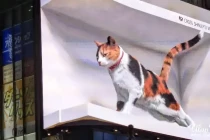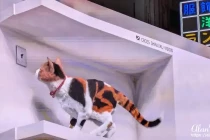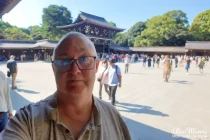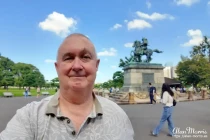Today, I woke up early and went for breakfast in the hotel before going on an escorted tour of Tokyo.
When I went to the main hotel restaurant, there was a long queue for breakfast, so I walked across the lobby to the small hotel cafe. I was shown to a seat and given a menu. I had the choice of an American breakfast or a Japanese breakfast. I decided to try a Japanese breakfast.
I was surprised to see a varied collection of small dishes, including soup, put in front of me. I wasn't sure what most of it was, but I ate everything, and there was nothing I would not eat again, and the coffee was great. The service was excellent. It will take time for me to get used to people bowing to me every time they speak or serve me with something. When I left the cafe, I turned and went outside to get on the coach for today's tour of Tokyo.
Zojoji Temple.
The Zojoji Temple is a historic Buddhist temple located in Tokyo, Japan, near the base of the Tokyo Tower. It is the head temple of the Jodo sect of Japanese Buddhism in the Kanto region. The temple was initially built in 1393 and moved to its current location in 1598 by Tokugawa Ieyasu, who made it the family temple of the Tokugawa shogunate.
Today, our first stop on our tour was at the Zojoji Temple. From the grounds of this Buddhist temple, we could also see the Tokyo Tower, which rises over the temple. We didn't get to go inside the Zojoji Temple or the Tokyo Tower, but we walked around the grounds and were told the history of the temple and the Tower next to it. Next to the temple, we saw lots of Jizos, traditional stone figures of deities that protect children.
When we left the Zojoji Temple, we got back on the coach and drove through Tokyo, passing through the Shibuya Crossing. On our way to the Meiji Shinto Shrine, we stopped briefly at the grounds of the Imperial Palace, where we looked at a statue of Kusunoki Masashige, a samurai warrior who lived toward the end of the Kamakura period (early 14th century) and is celebrated for his unswerving loyalty to the emperor.
Meiji Shinto Shrine
The Meiji Shinto Shrine, also known as Meiji Jingu, is a prominent Shinto shrine located in Shibuya, Tokyo. It is dedicated to the deified spirits of Emperor Meiji and his wife, Empress Shoken. The shrine was established in 1920 and is surrounded by a lush forest covering an area of 70 hectares, providing a serene escape from the bustling city.
I thought that the park and the Meiji Shinto Shrine were impressive, and our guide told us the difference between a Buddhist temple and a Shinto shrine. Shrines are places where people who follow the Shinto religion go. Shrines can be identified easily by the large gates before the entrance, called torii. Temples are places of worship for the Buddhist religion. As such, there are generally pagodas and statues of Buddha inside that are used for worship.
We only stopped briefly at the Shrine before continuing to the Nakamise Shopping Street, where we were given an hour of free time to go shopping. After looking for an electronics store to buy a Japanese USB charger, I gave up and went into a 7-11 store in the hope that it might have had one. It had everything, and I was able to buy a charger that would let me charge my electronic devices in the Japanese two-pin electric points. I walked back to the restaurant where we were having lunch and sat outside, watching the world go by as I waited for the rest of the tour. I was joined by a Mexican lady who was on the tour with three girls who, I think, were all her daughters. They were all charming and now lived in California, USA.
When we went into the restaurant, we had to go up a couple of flights in a tiny elevator. We all managed this in a couple of shifts and were soon eating a set menu. I had been saved a space by the three Australians I had eaten with last night, and enjoyed their company. The food was delicious, and I thought it was much better than last night's restaurant.
Tokyo Photos.
These images are all from my time in Tokyo.
Click on any image to see a larger version of the image with a description. Use the navigation below the thumbnail images to see the previous set of images, the next set of images, or the previous or following photo albums.

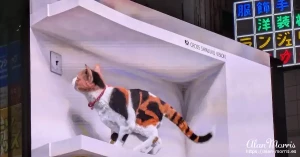








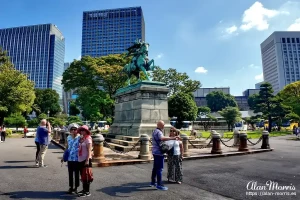

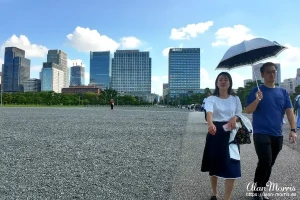
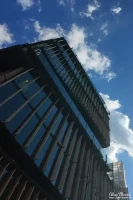

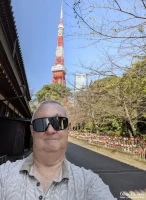
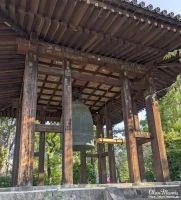


After our meal, we were all taken back to our hotel. When we were dropped off, we were told that we would have a new guide as our Japanese guide would be leaving us. Tonight, a new guide would take us into Tokyo to an older area with restaurants, where we would be left to get our meals and explore on our own. We were told the walk back would be about 40 minutes. Because we are going to Mount Fuji tomorrow, I decided to miss the long walk and rest my legs for what I expected to be a long day.
This evening, I went to the 7-11 store, about 300m away from the hotel, and got myself a selection of small Japanese food items and a sandwich with some Dr Pepper to wash it all down with. When I went back to my hotel room, I ate my food and watched CNN and the news of the American elections before going to bed.
Sheraton Miyako, Tokyo.
My hotel tonight was the Sheraton Miyako.
Address: 1-1-50, Shirokanedai, Minato-ku, Tokyo 108-8640.




















